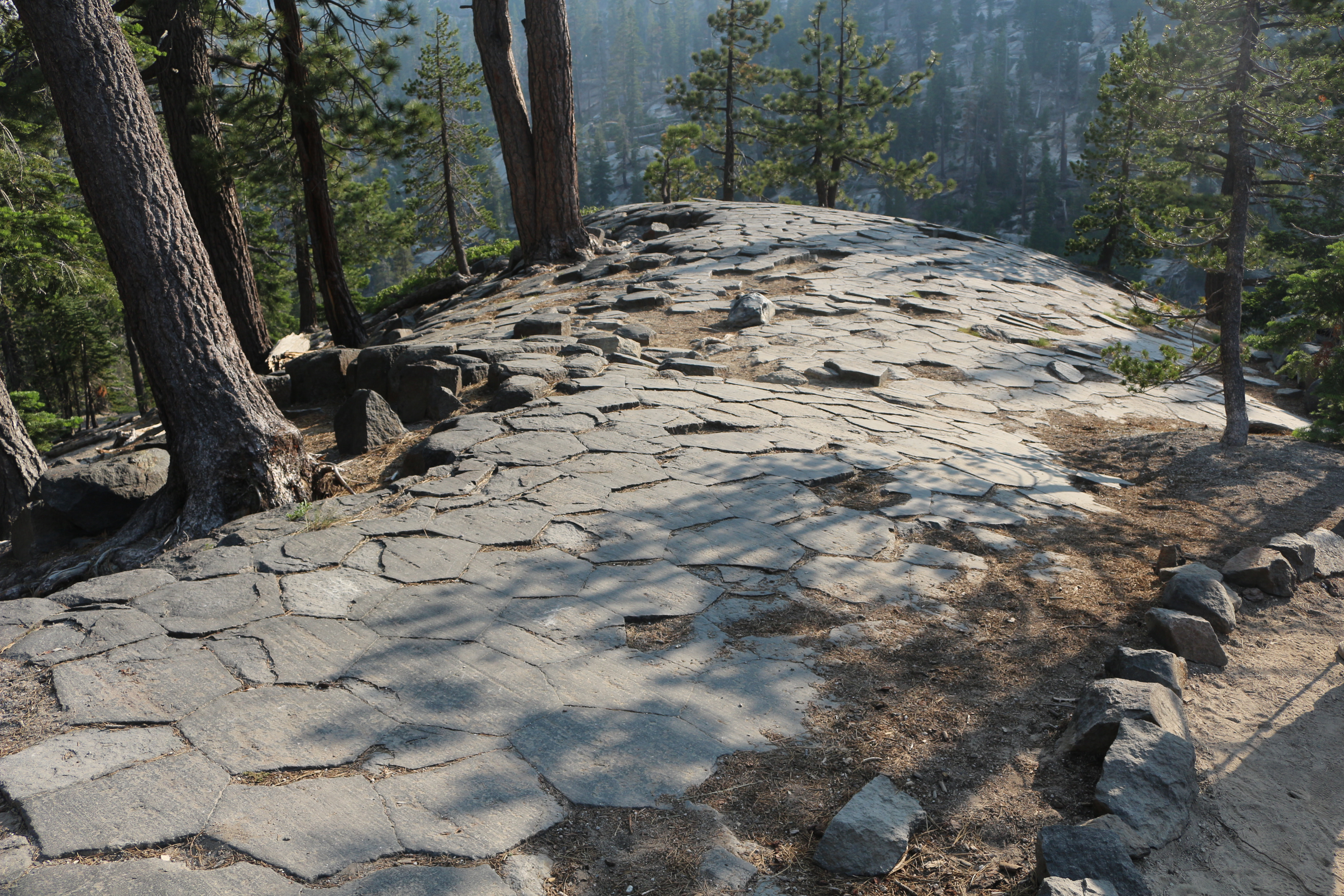Whilst Devils Tower might’ve been the first national monument to be established in the US, it’s not the only one that’s fiendishly named. Hop a few states southwest to California, and there you’ll find the Devils Postpile, an unusually beautiful reminder of this region’s fiery history.
Residing in the national monument named after it, the Devils Postpile is a cliff of columnar basalt, a type of rock formed by the rapid cooling of lava. These towers – some of which look as though they are lying on their side, while others stand up to 18.3 meters (60 feet) – are closely packed together, and share a rare degree of symmetry.
This can be seen most easily by looking at the rock formation from above, where the density of the columns and their hexagonal shape soon become apparent.

The top of the formation.
How did the Devils Postpile form?
What we now see as the Devils Postpile began its life as a lake of lava around 80,000 to 100,000 years ago. At some point during this period, a vent opened up in the Earth’s crust just north of where the monument is today, and began ejecting searing basaltic lava – a particularly runny form of the hot stuff – that flowed into the surrounding area.
Eventually, the lava’s path was blocked by a natural dam, causing it to build up into an uncommonly deep lava lake; at some points, it reached depths of 122 meters (400 feet). That’s greater than the average depths of all but one of the Great Lakes (Superior is deeper) and according to the National Park Service (NPS), is one of the main reasons the Devils Postpile formation exists.
When lava rapidly cools into solid rock, it contracts, which can cause stress-relieving fractures known as joints. These joints are most effective at relieving stress when three of them occur and intersect at 120° angles – this is what leads to columnar basalt often having a hexagonal shape.
The “columnar” element is the result of the joints starting at the cooler surface and then propagating down towards the bottom of the rock; this is thought to help this warmer portion of the rock cool down quicker.
When these towers first arose, the formation would’ve been much taller than it is currently. How the Devils Postpile is seen today – and in fact, that its unusual columns are seen at all – is largely due to the action of glaciers, which have carved out the land on multiple occasions.
Why is it called Devils Postpile?
According to the NPS, referencing American explorer Theodore Solomons, the earliest known name for the formation was slightly different from its current form: the Devil’s Woodpile. This was a moniker given to it by the sheepherders who used to live in the area, who thought the columns resembled wooden fence posts.
By the time it was established as part of a national monument in 1911, however, “woodpile” had evolved to “postpile”, and “Devil’s” became “Devil” – though it would later get the “s” back, just without the apostrophe.
Source Link: Devils Postpile In California Is A Rare Geologic Marvel With Towering 18-Meter Columns